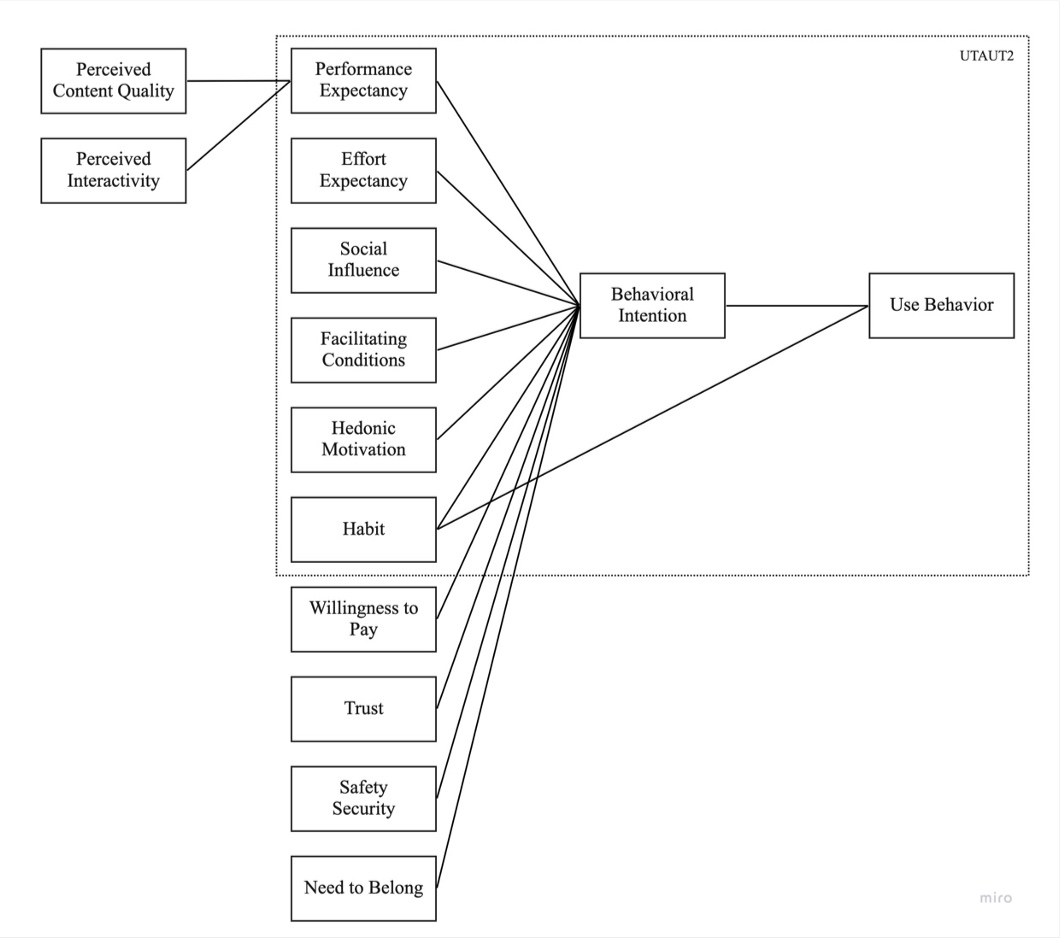How to enter binary observed outcome variable + scaling of latent variable?
JL
Dear all,
I am trying to run an SEM with the Theory of Planned Behavior. This is what my model looks like and that I want to test:
Attitude, Subjective Norm, Perceived Behavioral Control and Intention are latent variables, measured each by 4 indicators (questions) on a 7point likert scale. The Behavior is an observed binary variable (0=did not show behavior / 1 = did show behavior).
I treat the likert-scale inputs as continuous variables, but I am unsure about how to deal with the real behavior (0/1) as binary variable?
My code looks like:
mymodel <- "
attitude =~x1 + x2 + x3 + x4
subjectivenorm =~ x5 + x6 + x7 + x8
behcontrol =~ x9 + x10 + x11 + x12
intention =~ x13 + x14 + x15 + x16
intention ~ attitude + subjectivenorm + behcontrol
behavior ~ intention"
In this context, I have two questions:
- How do I enter my binary dependent variable (in the fit function)?
- I have seen that some use „ordered“ to treat these variables as ordered (ordinal) variables - is that the only way to do it?
- e.g., fit <- sem(model = mymodel, data = df, ordered = "behavior") - like this?
- Why do I need to indicate my binary variable as ordinal variable, although it is categorical?
- What is the interpretation of the betas?
- If beta/ the regression coefficient of Attitude—>Intention is "0.4" -
- are we talking about 1 unit increase in Attitude —> "0.4" unit increase in Intention? (if so, what is the scale / units?)
- Or are we talking about 1 standard deviation increase in Attitude —> "0,4" standard deviation increase in Intention? (Where do I find the mean and SD of my latent variable?)
- How can I interpret a 0.4 from intention --> behavior?
- A 1 unit increase in Intention --> "0.4" unit increase in behavior? (Again here, the interpretation also depends on the scale of the latent variable intention - if intention as latent variable has the same likert scale of 1 to 7, it is something different as to whether if its scale was 0 to 1)
Terrence Jorgensen
- I have seen that some use „ordered“ to treat these variables as ordered (ordinal) variables - is that the only way to do it?
- e.g., fit <- sem(model = mymodel, data = df, ordered = "behavior") - like this?
- Why do I need to indicate my binary variable as ordinal variable, although it is categorical?
- What is the interpretation of the betas?
- I am not quite sure how lavaan actually scales the latent variable?
- How can I check the "values" of the latent variables?
- If beta/ the regression coefficient of Attitude—>Intention is "0.4" - are we talking about 1 unit increase in Attitude —> "0.4" unit increase in Intention? (if so, what is the scale / units?)
- Or are we talking about 1 standard deviation increase in Attitude —> "0,4" standard deviation increase in Intention?
- (Where do I find the mean and SD of my latent variable?)
- How can I interpret a 0.4 from intention --> behavior?
- A 1 unit increase in Intention --> "0.4" unit increase in behavior? (Again here, the interpretation also depends on the scale of the latent variable intention - if intention as latent variable has the same likert scale of 1 to 7, it is something different as to whether if its scale was 0 to 1)
I first did quite some research online and in different books and simply could not find the answers I needed, so I appreciate very much any comment, advice, suggestion, reading tip, etc.
JL
- What is the interpretation of the betas?
Same as any regression slopes. But the effect of intention on binary behavior is a probit regression slope, so its effect is in the scale of a normally distributed latent response (consult the standardized output to assume it is a z score, which is the default in lavaan, so it probably matches the unstandardized slope).
Terrence Jorgensen
In Lavaan - where do I find the beta-0? / what is the intercept for my probit regression?
behavior ~ intention
behavior ~ NA*1 # free the intercept
behavior | 0*t1 # fix the threshold to zero
Kristina Mertens

Quality=~PC01_01+PC01_02+PC01_03
Interactivity=~PI01_01+PI01_02+PI01_03+PI01_04+PI01_05
Performance=~PE01_01+PE01_02+PE01_03
Effort=~EE01_01+EE01_02+EE01_03+EE01_04
Influence=~SI01_01+SI01_02+SI01_03
Conditions=~FC01_01+FC01_02+FC01_03
Hedonism=~HM01_01+HM01_02+HM01_03
Habit=~HA01_01+HA01_02+HA01_03+HA01_04
Payment=~WP01_01+WP01_02+WP01_03
Trust=~TR01_01+TR01_02+TR01_03+TR01_04
Safety=~SS01_01+SS01_02+SS01_03+SS01_04
Belonging=~NB01_01+NB01_02+NB01_03+NB01_04+NB01_05+NB01_06+NB01_07+NB01_08+NB01_09+NB01_10
Intention=~BI01_01+BI01_02+BI01_03
Performance~Quality + Interactivity
Intention~Performance+Effort+Influence+Conditions+Hedonism+Habit+Payment+Trust+Safety+Belonging
Use~Intention
'
Warning messages:
1: In lav_model_vcov(lavmodel = lavmodel, lavsamplestats = lavsamplestats, :
lavaan WARNING:
The variance-covariance matrix of the estimated parameters (vcov)
does not appear to be positive definite! The smallest eigenvalue
(= -9.659971e-11) is smaller than zero. This may be a symptom that
the model is not identified.
2: In lav_object_post_check(object) :
lavaan WARNING: covariance matrix of latent variables
is not positive definite;
use lavInspect(fit, "cov.lv") to investigate.

Terrence Jorgensen
1: In lav_model_vcov(lavmodel = lavmodel, lavsamplestats = lavsamplestats, :
lavaan WARNING:
The variance-covariance matrix of the estimated parameters (vcov)
does not appear to be positive definite! The smallest eigenvalue
(= -9.659971e-11) is smaller than zero. This may be a symptom that
the model is not identified.
2: In lav_object_post_check(object) :
lavaan WARNING: covariance matrix of latent variables
is not positive definite;
use lavInspect(fit, "cov.lv") to investigate.

